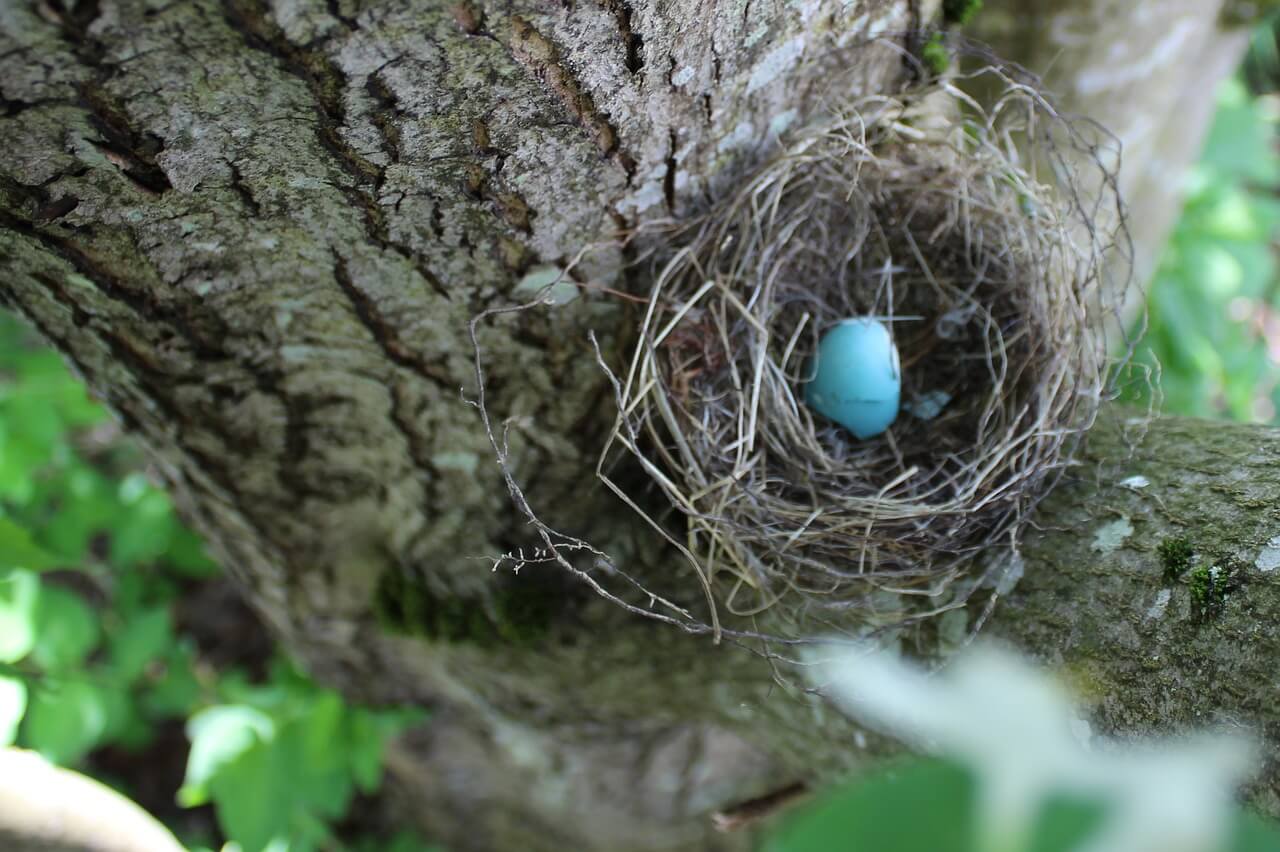Do you have a robin nest built near your front door, patio, or in your backyard?
It’s fascinating to see the baby robins grow up. But often, while observing the nest, a question comes – Do robins use their nest?
As a general rule, Robins make new nests for each brood, and the constructed nests are usually not maintained. However, sometimes old nests are reused, and a new nest is often built on top of the old one.
Read on as I share the top 7 things you need to know about Robins’ nesting and pairing nature, and other related information.
1. Do Robins Use The Same Nest Site Again?
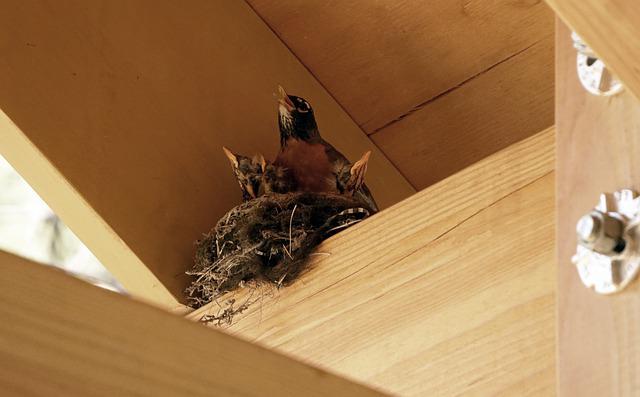
Some pairs of Robins get so connected to one spot that they stay there year after year.
Each year they use the nest, a new nest is built on one of the previous year’s nests. Moreover, Robins also make another nest in the same site if their nest is removed.
The author, Joseph C. Howell, highlights in the research paper (notes on the nesting habits of the American Robin) that once the author received a nest with around 7 full nests built on top of each other. That nest was removed from a beam in the barn.
In the research paper, the author also notes that this kind of multiple nests isn’t apparently very rare.
2. Do The Same Robins Pair Up Next Season?
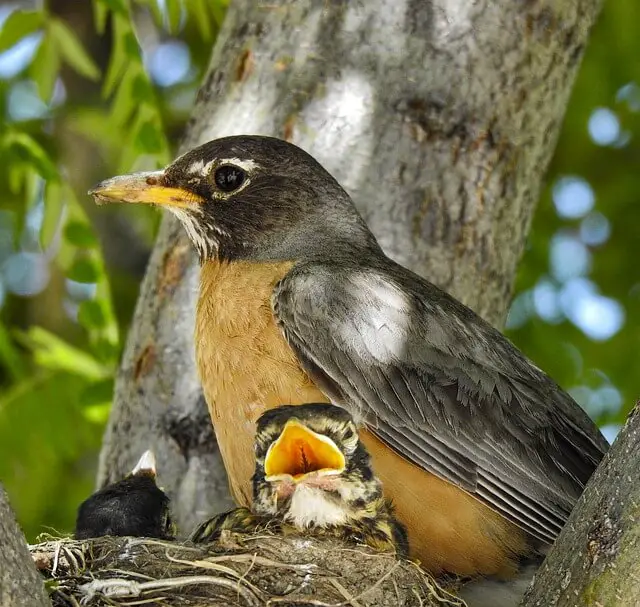
Usually, Robins are not known to mate for life. However, most pairs stay together for the whole breeding season, which can include up to 2-3 nestings.
Robins usually only have one partner and stay with them for the whole breeding season. But if one mate dies or is lost for some reason, the bird will accept a new one.
Re-matings that happen in back-to-back years are probably just a matter of chance, though.
Some males and females who mated the previous year will return to the same territory in the spring – and stay together for another year. Most of the time, this happens when they were good parents the year before.
The fact that robins like to return to the same site each year increases the likelihood that the same birds will mate together in consecutive years.
3. What Type Of Habitat Do Robins Prefer?
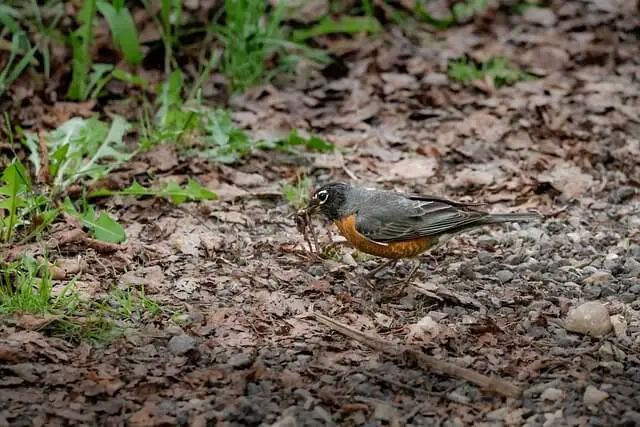
In regions where the Robin is a popular nesting bird, it inhabits a variety of habitat types.
Dense woods and treeless plains are acceptable habitats for this bird; nevertheless, in both of these ecosystems, occupied regions are more commonly chosen than unoccupied ones.
The criteria of the Robin are met most effectively in suburban environments.
Open lawns are great places to find food, and the shade trees that grow around houses and along the streets are often used to build nests.
This bird does well in and around towns and villages, which is why its numbers have grown since people started living in its range.
If you want to attract robins with a nestbox, it must have an open front and be hidden in a climber or other similar plant. Robins are known for making their nests in strange places like sheds, coat pockets, boots, hanging baskets, farm equipment, under car hoods, etc.
4. How Is The Robin’s Nest Constructed?
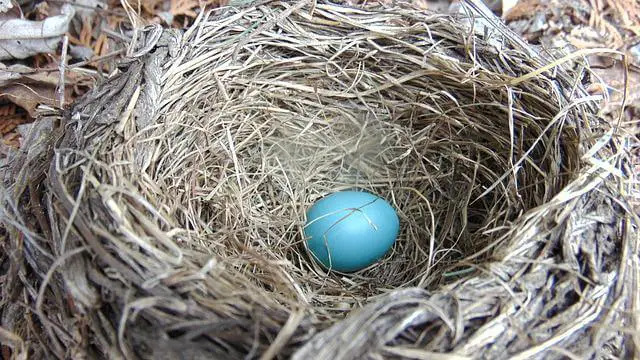
The females are the one that chooses the nest site and builds the nest.
The male can visit the nest site before the nest is built and bring nesting materials to the mate.
Female Robin builds the nest from the inside out. She presses dead grass and twigs with one wing into a cup-shaped structure. Apart from twigs and grass, additional substances include paper, feathers, rootlets, or moss.
The female Robin then strengthens the nest with worm-casting mud once the cup is created. Finally, she adds fine, dry grass to the nest.
5. How Do Robins React To Humans And Defend Their Nests?

The Robin is usually brave when it comes to safeguarding its nesting region. The bird’s reaction to a person coming close to the nest depends on:
- The bird’s personality
- Stage in the nesting cycle
- How used it is to people
Some are quite protective about their nests the entire time they are being utilized.
In places where people live, robins are not afraid of people, but in wild, uninhabited places, they are very shy.
When people come to Robin’s territory, they defend it with different calls and actions. They usually puff up their feathers, making them look bigger, raise the feathers on top of their heads until they look like they have a low crest, extend their tails, and flutter their wings hard at the intruder.
Robins often fly above people and sometimes dive within a few feet of them. They rarely hit them with their bills, though.
As the birds fly fast overhead, the tips of their wings hit together. It’s possible that this action is what makes the sharp sound that often goes with this flight.
6. Do Other Bird Species Use Robins’ Nests?

Sometimes, it’s impressive how well the Robin gets along with other species regarding the nest.
A Robin and a Mourning Dove have been noticed using the same nest simultaneously, and a pair of Western Robins and House Finches have had babies in the same nest. In these cases, members of both species visited the nest.
Robins have been found nesting in close association with other bird species such as Mourning Dive, House Wren, Tree Swallow, Kingbird, bluebird, House Finch, and more.
7. When Are Baby Robins Ready To Fly?
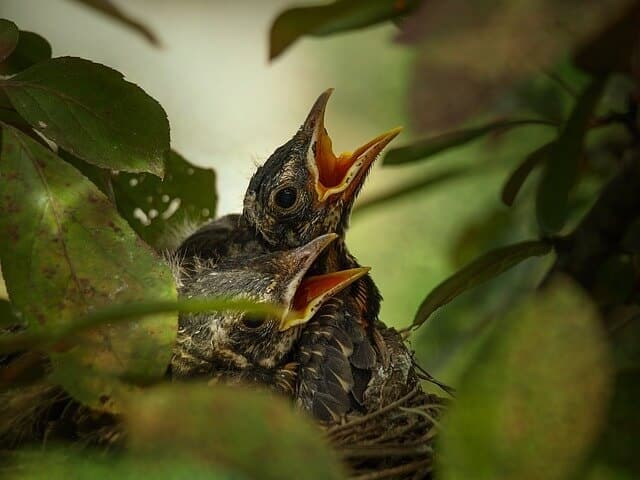
Usually, the female Robin completes the construction of the nest in about 5-7 days, especially if it’s the first nest of the season. However, if it is too wet or dry, the nest-construction time can even take up to 2 weeks.
Mud is a key part of this process. If there isn’t enough mud, the construction of the nest could be delayed. So, if it’s too dry, she could wait for it to rain to have enough mud.
Most of the time, if the nest is destroyed, the female can rebuild it in 2–3 days.
Robins lay four blue eggs, one every day. These eggs are easy to spot because of their color.
Over the course of 2–3 days, eggs tend to hatch in the order they were laid. And it takes about 24 hours for a single chick to hatch.
In 13–15 days, the chicks are ready to fly. When robins are born, they are helpless, have no feathers, and are pink. Soon, though, they get their first feathers.
Further Recommended Reading:
Sources:
- Journal Article: Breeding Behavior and Nesting of the Eastern Robin – Howard Young
- Journal Article: Notes on the Nesting Habits of the American Robin – Joseph C. Howell
- American Robin – The Cornell Lab of Ornithology Birds Of The World
- Article: The Robins Have Returned, But Did They Ever Leave? – Illinois Extension

